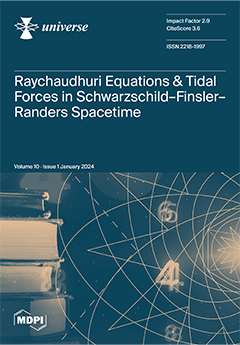Superdeterminism—where the Measurement Independence assumption in Bell’s Theorem is violated—is frequently assumed to imply implausibly conspiratorial correlations between properties
of particles being measured and measurement settings
x and
y. But it does not have to be so: a superdeterministic but non-conspiratorial
[...] Read more.
Superdeterminism—where the Measurement Independence assumption in Bell’s Theorem is violated—is frequently assumed to imply implausibly conspiratorial correlations between properties
of particles being measured and measurement settings
x and
y. But it does not have to be so: a superdeterministic but non-conspiratorial locally causal model is developed where each pair of entangled particles has unique
. The model is based on a specific but arbitrarily fine discretisation of complex Hilbert space, where
defines the information, over and above the freely chosen nominal settings
x and
y, which fixes the exact measurement settings
X and
Y of a run of a Bell experiment. Pearlean interventions, needed to assess whether
x and
y are Bell-type free variables, are shown to be inconsistent with rational-number constraints on the discretised Hilbert states. These constraints limit the post-hoc freedom to vary
x keeping
and
y fixed but disappear with any coarse-graining of
,
X, and
Y, rendering so-called drug-trial conspiracies irrelevant. Points in the discretised space can be realised as ensembles of symbolically labelled deterministic trajectories on an ‘all-at-once’ fractal attractor. It is shown how quantum mechanics might be ‘gloriously explained and derived’ as the singular continuum limit of the discretisation of Hilbert space. It is argued that the real message behind Bell’s Theorem has less to do with locality, realism, or freedom to choose, and more to do with the need to develop more explicitly holistic theories when attempting to synthesise quantum and gravitational physics.
Full article





